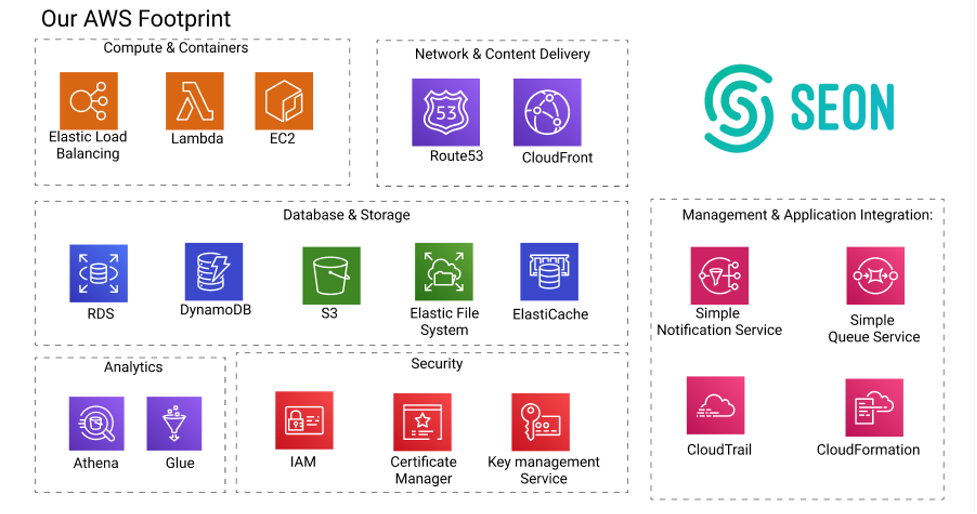AWS Startups Blog
SEON: Anti-fraud Solutions that Scale like a Startup
Guest post by Tamas Kadar, CEO of SEON TECHNOLOGIES
As a Budapest-based SaaS startup, our goal at SEON is to help companies of all sizes reduce chargebacks and mitigate fraud, especially in high-risk sectors and markets where legacy solutions don’t fit the bill for lack of accurate data. Our solution is popular with fast-growing companies because we scale with our customers, both in terms of pricing as well as solution complexity.
We do so because we deeply understand the problem of fraud. Originally starting out as a crypto exchange for the Central-Eastern-European region, we were soon facing waves of chargebacks that threatened the business. Unfortunately, when looking around the market, we found most legacy companies operating in the risk tech space lacking. They were either prohibitively expensive for an upstart, requiring a long term commitment upfront, or the integration process was slow and painful, and they often relied on stale data for risk scoring that was not appropriate for certain target markets. SEON was essentially founded to tackle all of these problems. In this post, we will explain how we are able to help online companies of varying sizes in different verticals and markets with their risk management and KYC procedures.
By leveraging AWS from the start, we are able to provide accurate risk scores in real time to our customers, either via an API or as a complete risk management platform. This allows customers to accept more risk without having to introduce further friction in the customer signup, purchasing, or withdrawal processes, based on some core data points that are provided during the onboarding journey. This risk score can be integrated into any existing technology stack they might already use.
Scaling Defenses
The idea behind real-time risk scoring, as opposed to using database lookups, is that we scale the defenses: the best way to beat fraudsters is to make them give up. At the core of our service is our unique live social media lookup via emails and phone numbers. It allows our customers to check 20+ social media networks and messenger apps to see if the provided details match registered profiles, returning the user’s bio or gravatar, which can then be cross-checked against the personal details provided on registration or when making a purchase.
This makes it exponentially harder for cybercriminals to scale their operations against the companies they target. Some of our clients who either rely on internal risk models or are tied to a custom, in-house risk management platform use this to enrich their customer data via our API.
Other customers need a full-scale decision-making solution, one that is aided by machine learning and trained by their existing data, which means that we have to offer our service in real-time. In the world of online transactions, this means that the load increases not just during peak business hours, but also randomly in high bursts, and our infrastructure must be up to the challenge.
We utilize the following parts of the AWS infrastructure:

Our company utilizes various AWS services such as Amazon CloudFront, Amazon API Gateway, AWS Elastic Beanstalk, Amazon Relational Database Service (Amazon RDS), as a backbone for our REST API that we provide to our customers. We’ve decided to leverage a zero-downtime approach with these services. Our core backend service is managed by Elastic Beanstalk, which means that we can scale-up our infrastructure at any point in time. We also decided to use API Gateway to add more control and security to our public-facing API endpoints. AWS RDS lets us run the latest database engine which is a key element of our solution’s outstanding response time and also a great foundation to store and work with terabytes of data which is essential to our business. Using a managed database service makes it easier to monitor, scale, migrate our database components. It’s also worth mentioning that we are backed with great support from AWS when something goes wrong. Our infrastructure includes serverless AWS Lambda components as well, so we can release smaller components with more confidence and cost-efficiency. We use these components for reporting and executing scheduled tasks, but it’s also a great way to guarantee resources for separated executions of the same tasks while maintaining effortless scale.
The service that we provide is available globally, and our partnership with AWS ensures that we can deliver our platform with great performance regardless of our customer’s location, thanks to the ability to deploy our system in different AWS regions worldwide without significant overhead when it comes to maintenance. Ultimately, this scalability allows our customers to accept more transactions with less time spent on manual review and allows us to price our service very competitively, billing on a per-transaction basis. By following this flexible model, we are basically sharing the risk with our customers: we grow as they grow, instead of locking them in service contracts that might not be viable in turbulent times. It also incentivizes us to be the best in class, as taking on too much risk can break a fast-growing business. This allows us to operate in very diverse markets, having been chosen by such clients as Patreon, TruNarrative, and Air France. We, like many other nimble online companies, rely on AWS because of its flexibility. As the economy continues to digitalize, we believe that risk management also needs to adapt by being global, real-time and flexible, fit for different needs and sizes. As time passes, this notion seems less and less like a risky bet and more in line with the natural evolution of our online commercial world.